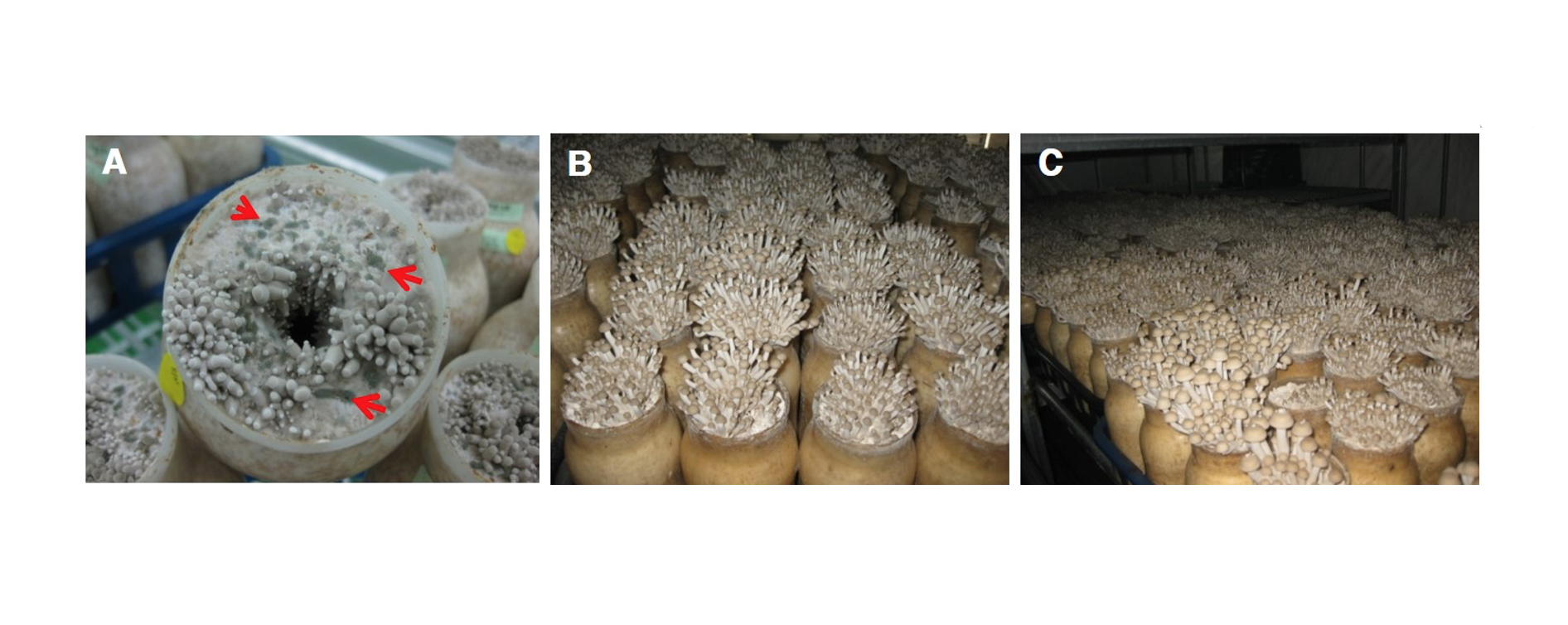Abstract
Beech mushroom (
Figures & Tables

Fig. 1. Symptoms of naturally-contaminated by A, primordial formation stage; B, early growing stage; C, harvesting stage.
Min-Keun Kim1,* Soon-Ae Sim1 Ah-Young Kim1 Jin-Hyeuk Kwon1 Young-Ho Chang2
1Environmental Agriculture Research Division, Gyeongsangnam-do Agricultural Research and Extension Service, Jinju 52733, Korea
2Crop Research Division, Gyeongsangnam-do Agricultural Research and Extension Service, Jinju 52733, Korea
Beech mushroom (

Fig. 1. Symptoms of naturally-contaminated by A, primordial formation stage; B, early growing stage; C, harvesting stage.